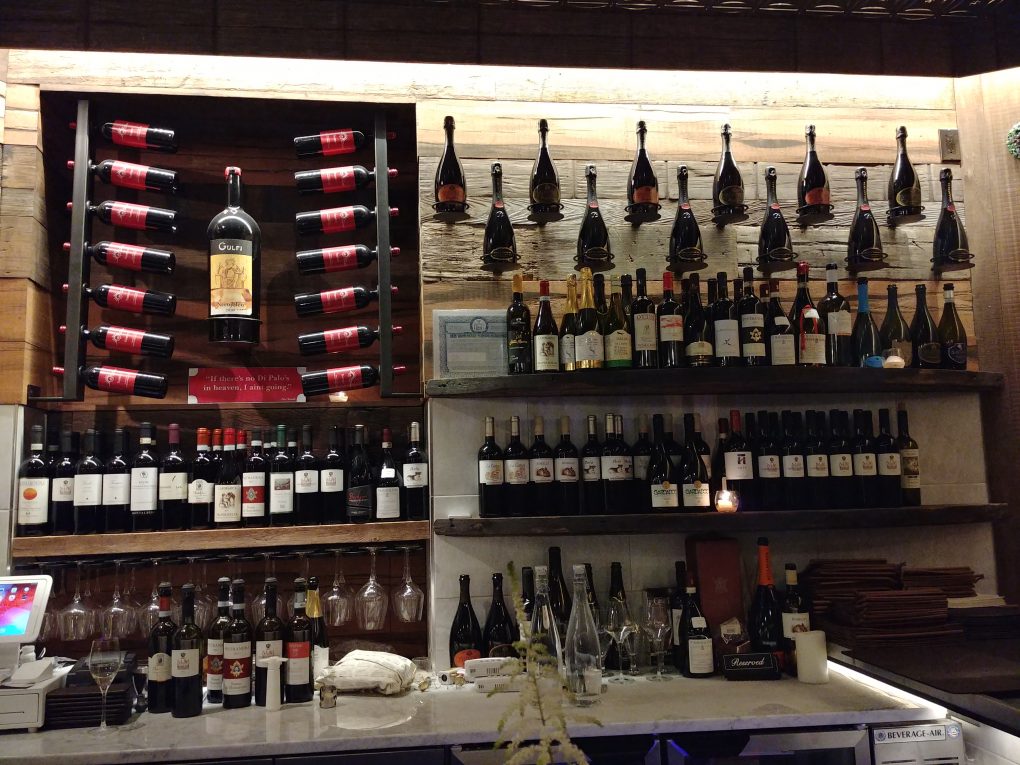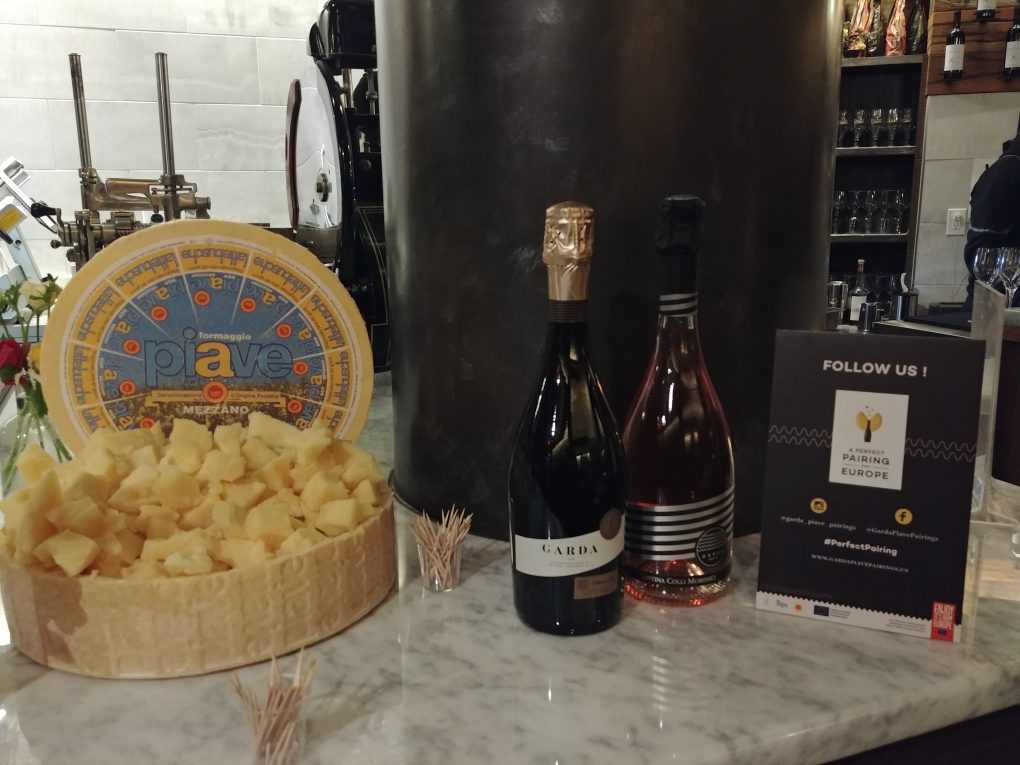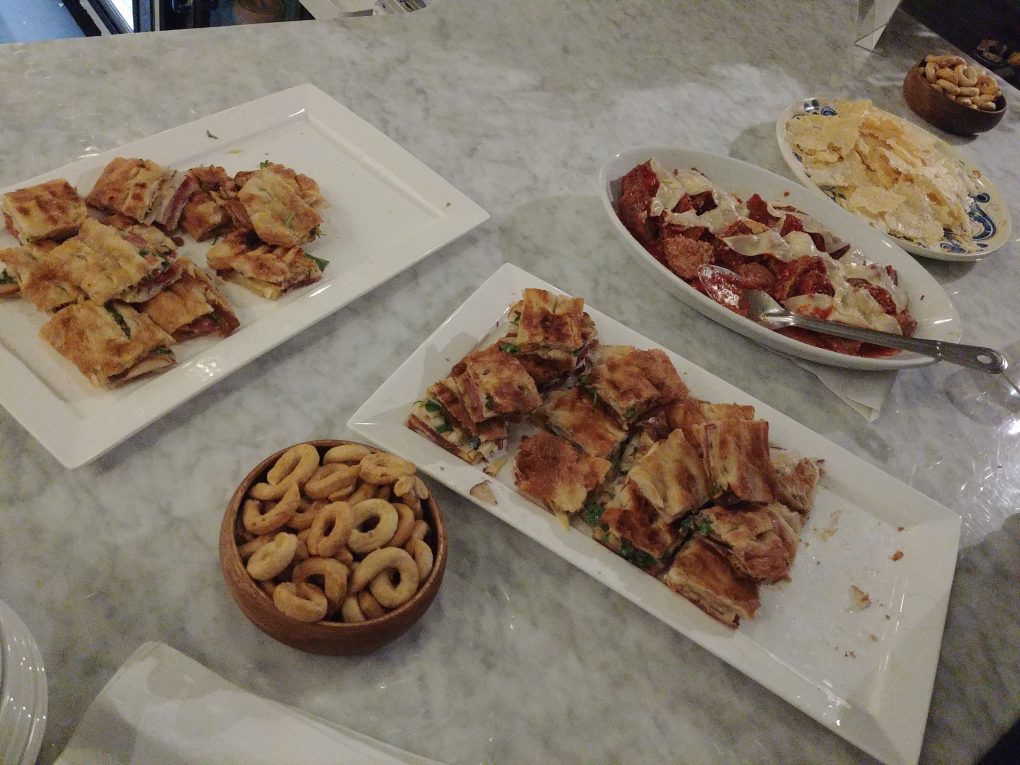Northern Italy was just made for creating great wine. The temperate climate, sun soaked days, and refreshing breezes that come through the region, as well as the mineral rich soil, have help to establish this area as prime wine making territory. These conditions have also helped to distinguish three Northern Italian regions as major centers for quality sparkling wine production.
Two wineries including Cantina Colli Morenici and Cantina di Custoza from the Garda D.O.C., and cheese makers from the Piave D.O.P. region came to New York City this winter to showcase some of what Northern Italy has to offer. alongside an eclectic menu of Northern Italian fare made especially for the occasion by C. Palo Wine Bar. The recently opened C. di Palo Wine Bar is the latest venture by 5th. generation owners of the 95 year old, family run Di. Palo’s Fine Foods, specializing in imported pastas, cheeses, meats and olive oils.

The Garda D.O.C. encompasses the appellations of Valtenesi, San Martino della Battaglia, Lugana, Colli Mantovani, Custoza, Bardolino, Valpolicella, Valdadige, Durello and Soave. The Garda D.O.C. was established in 1996 and unifies these 10 appellations.
The Consorzio Garda D.O.C. regulates wine production
in this region under established guidelines to ensure its quality . The Garda D.O.C. encompasses every type of wine including sparkling or spumante, white, rose’ and red. The present focus is on spumante and seven million bottles are produced annually across the Garda D.O.C’s 31,100 hectares of vineyards with future production levels anticipated at up to 20 million bottles.
Only Pinot Grigio, Garganega, Trebbiano, and Chardonnay, or a blend of these grapes can be used to make Garda D.O.C spumante.
Rose’ Garda D.O.C spumante can only contain Corvina, Rondinella, Pinot Nero, and Merlot. Both the traditional and charmat methods of fermentation are permissible. Dosage levels can vary from brut nature ( less than three grams of residual sugar) to demi sec (up to 50 grams of residual sugar).

The Consorzio Di Tutela Del Formaggio Piave D.O.P. regulates the production of Piave cheeses. The Consorzio was established in 2010 to uphold its quality and maintain its flavor integrity, and to guard against fraud and price manipulation. 350000 wheels of Piave D.O.P cheeses are produced annually in Belluno, a province lying between Friuli Venezia Giulia and Trentino Alto Adige. The name is derived from the Piave River that runs down from the summit of Mount Peralba in the Dolomites through the Piave D.O.P. cheese production area to Treviso. There are five Piave cheese designations based on how long the cheese has been aged.
Piave Fresco D.O.P. (20 and 60 days)
Piave Mezzano D.O.P. (61 and 180 days)
Piave Vecchio D.O.P ( over 6 months)
Piave Vecchio Selezione Oro D.O.P. (Over a year)
Piave Vecchio Riserva D.O.P. ( over one and a half years)
Piave D.O.P. Cheeses are circular in shape, measure ten to twelve inches in diameter and have a thickness of approximately three inches. The rind and curd of older Piave D.O.P. cheeses exhibit a deeper hue. Piave D.O.P. cheeses are comprised of milk and its enzymes, rennet and salt. The absence of chemicals and additives guarantee their purity. They are also rich in amino acids, calcium and phosphorus. The fermentation process results in a low lactose product, while aging creates readily dissoluble proteins and fats that can be quickly digested. Piave D.O.P cheeses undergo a coagulation and cooking process where the raw milk is cleaned and pasteurized prior to being combined with milk enzymes and boiled. The addition of rennet aids in the casein (milk protein) coagulation process. The curd is then molded. It is place on circular containers and the excess whey is siphoned off. The cheese in pressed for forty minutes to remove moisture. Once it has achieved the right level of consistency it is transferred to a cheese mold. The rind is engraved to designate the type of cheese. It then undergoes twelve hours of partial ripening. The cheese wheel is immersed in a saltwater brine for a minimum of two days. It is left to mature in an aging chamber at specific temperature and humidity levels before being released.


Two selections from the Garda D.O.C. including a crisp
Cantina di Custoza Spumante Bianco with soft acidity, white flower and citrus aromas, and lemon, green apple and orchard fruit notes, and a Cantina Colli Morenici Extra Dry Rose’ Brut with ripe berry fruit aromas, and bright strawberry, raspberry, apple, and balanced mineral notes were paired with a range of Piave cheeses and a collection of appetizers and main courses from C. di Palo Wine Bar. The complementary nature of the wine, cheese and Northern Italian fare was affirmed through the seamless pairing of varying ingredients and flavors.

Be First to Comment